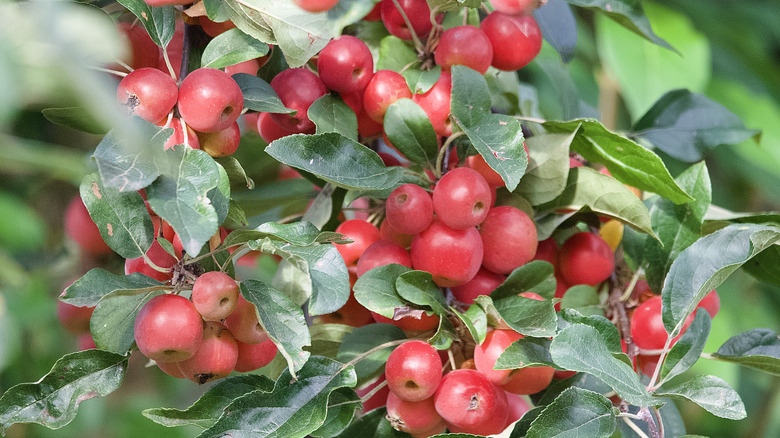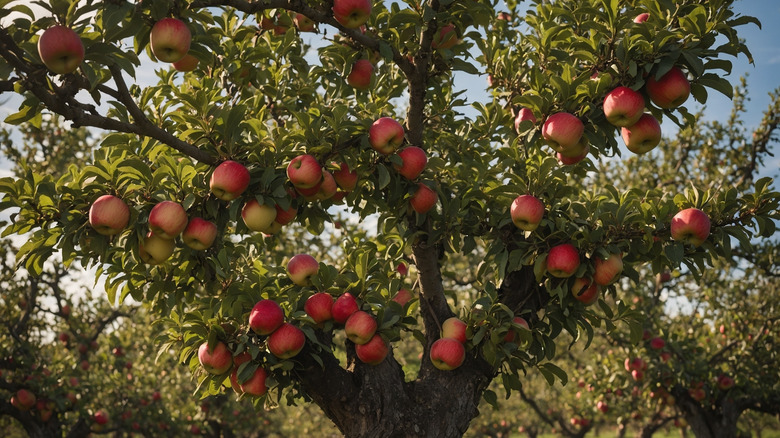How To Tell The Difference Between An Apple Tree And A Crabapple Tree
What's the difference between a crabapple tree and an apple tree? This might sound like a setup for a joke, but it's a real question you might find yourself asking when that tree in your yard starts to grow apples, or at least what looks like apples.
Crabapple trees and regular apple trees are both members of the genus Malus, but the apples you're thinking of when you imagine biting into one grow on trees scientifically known as Malus domestica. There are dozens of types of crabapple trees you can grow in your yard, with hundreds of cultivars in total and thousands of named apple cultivars, so saying apple trees or crabapple trees will always look or grow a certain way is like comparing apples to... well, crabapples.
That said, there are still some basic ways you can compare the two to find out which type of tree you're looking at. The number one way to tell apple trees and crabapple trees apart is by looking at their fruit — both trees fruit in the late summer to early fall, but apples will be larger than crabapples. Crabapples are under 2 inches in diameter, but these red and yellow fruits can be as small as 1/4 inch depending on the type. Apples, on the other hand, mostly grow to at least 2 inches in diameter, and often larger.
Other ways to tell apple trees and crabapple trees apart
It's easier to distinguish crabapple trees from apple trees when they're fruiting, but that doesn't mean you can't tell the difference year-round. Admittedly, the details of the trees can look pretty similar, with both generally having oval-shaped leaves with serrated edges that grow in an alternating pattern on branches. Both trees also flower with gorgeous blooms that vary in color, but are usually white or pink.
The timing of the tree's flowering can be a clue. Crabapple varieties typically bloom from April to early June depending on type and location, but apple varieties have a wider range of bloom timing depending on type and location, with early-season trees blooming in the spring and late-season trees blooming as summer ends. There are exceptions to this, but it can still be a hint as to what tree you're dealing with.
No matter the time of year, you can also look at the overall size of the tree. Crabapple trees are generally smaller than apple trees since they don't need to store as many nutrients for their more petite fruit. Both trees have dwarf varieties, but your average crabapple tree usually stands around 15 to 20 feet tall, while standard varieties of apple tree measure closer to 30 feet tall. If you're growing a crabapple tree, avoid these common mistakes, and if it's a regular apple tree, grow and care for your apple tree well so you can enjoy the fruit for years to come!

